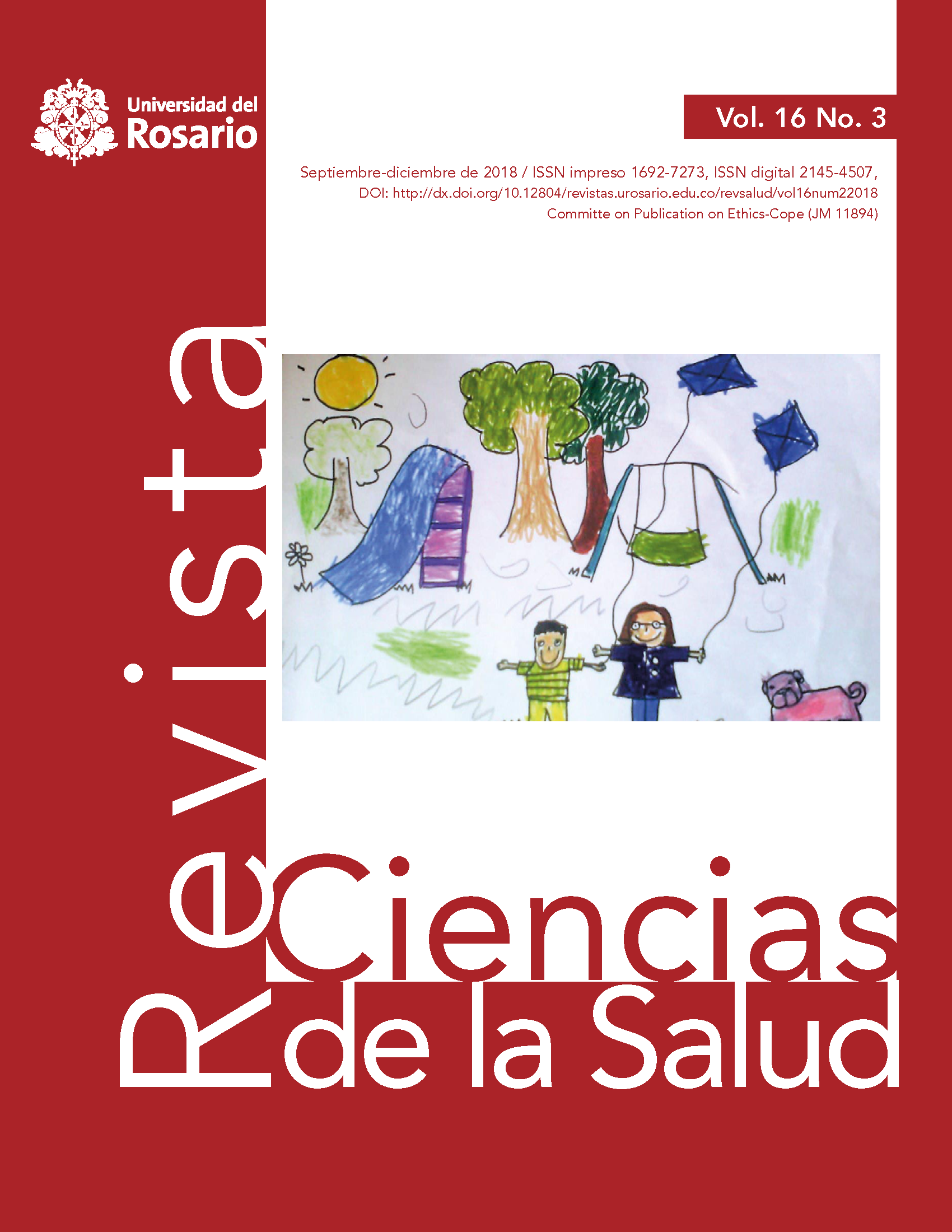Efectividad de una intervención breve para reducir el consumo de alcohol en adolescentes
Barra lateral del artículo
Contenido principal del artículo
Descargas
World Health Organization. Global strategy to reduce the harmful use of alcohol. Geneva: World Health Organization; 2010.
World Health Organization. Global status report on alcohol and health-2014. Geneva: World Health Organization; 2014.
Secretaría de Programación para la Prevención de la Drogadicción y la Lucha contra el Narcotráfico. Sexta Encuesta Nacional sobre Consumo de Sustancias Psicoactivas en Estudiantes de Enseñanza Media [internet]. [cited 2016 ago 8] Available at: http://scripts. minplan.gob.ar/octopus/archivos.php? le=4121
National Institute of Alcohol Abuse and Alcoholism. NIAAA Council approves definition of binge drinking. NIAAA newsletter. 2004;3:3.
Conde K, Brandariz RA, Cremonte M. Problemas por uso de alcohol en estudiantes secundarios y universitarios. Rev. Chil. Neuro-Psiquiat. 2016;54(2):84-93.
White A, Hingson R. The burden of alcohol use: excessive alcohol consumption and related consequences among college students. Alcohol Res. 2013;35(2):201-18.
Tanner-Smith EE, Lipsey MW. Brief alcohol interventions for adolescents and young adults: A systematic review and meta-analysis. J Subst Abuse Treat. 2015;51:1-18.
Nilsen P, Kaner E, Babor T. Brief intervention, three decades on. Nord Stud Alcohol DR. 2008;25:453-67.
Miller WR, Rollnick S. La entrevista motivacional. Ciudad: Paidós; 1999.
Cremonte M, Monteiro M, Chepitel C. Interventions to reduce alcohol-related injury in the emergency department: Screening, brief intervention and monitoring. En: Monteiro M, Cherpitel C, editors. Prevention of Alcohol-Related Injuries in the Americas: From Evidence to Policy Action. Washington D.C.: PAHO; 2013. p. 159-68.
Babor TF, McRee BG, Kassebaum PA, Grimaldi PL, Ahmed K, Bray J. Screening, Brief Intervention, and Referral to Treatment (sbirt) toward a public health approach to the management of substance abuse. Subst Abus. 2007;28(3):7-30.
US Department of Health and Human Services. Helping patients who drink too much: a clinician’s guide. National Institutes of Health. National Institute on Alcohol Abuse and Alcoholism. Ciudad: NIH Publication; 2005.
Bernstein E, Bernstein J, Levenson S. Project assert: a need-based intervention to increase access to primary care, preventive services, and the substance abuse treatment system. Ann Emerg Med. 1997;30(2):181-9.
Beaton A, Shubkin CD, Chapman S. Addressing substance misuse in adolescents: a review of the literature on the screening, brief intervention, and referral to treatment model. Curr Opin Pediatr. 2016;28(2):258-65.
Magill M, Colby SM, Orchowski L, Murphy JG, Hoadley A, Brazil LA, et al. How does brief motivational intervention change heavy drinking and harm among underage young adult drinkers? J Consult Clin Psychol. 2017;85(5):447.
Schermer CR. Feasibility of alcohol screening and brief intervention. J. Trauma Acute Care Surg. 2005;59(3): S119-23.
Sise MJ, Sise CB, Kelley DM, Simmons CW, Kelso DJ. Implementing screening, brief intervention, and referral for alcohol and drug use: the trauma service perspective. J. Trauma Acute Care Surg. 2005;59(3): S112-8.
Monteiro MG. Alcohol y salud pública en las Américas: Un caso para la acción. Ciudad: Pan American Health Organization; 2007.
Nilsen P, Baird J, Mello MJ, Nirenberg T, Woolard R, Bendtsen P, et al. A systematic review of emergency care brief alcohol interventions for injury patients. J Subst Abuse Treat. 2008;35(2):184-201.
Saunders JB, Aasland OG, Babor TF, Fuente de la JR, Grant M. Development of the alcohol use disorders identification test (audit): who collaborative project on early detection of persons with harmful alcohol consumption—II. Addiction. 1993;88(6):791-804.
White HR, Labouvie EW. Towards the assessment of adolescent problem drinking. J. Stud. Alcohol. 1989;50(1):30-7.
Cremonte M, Brandariz RA, Biscarra A, Lichtenberger A, Marconato M. Análisis dimen- sional de la versión argentina del Rutgers Alcohol Problem Index (rapi). VI Congreso Atlántico de Psiquiatría. 2010; ciudad.
Cremonte M, Ledesma RD, Cherpitel CJ, Borges G. Psychometric properties of alcohol screening tests in the emergency department in Argentina, Mexico and the United States. Addict Behav. 2010;35(9):818-25.
Knight JR, Sherritt L, Harris SK, Gates EC, Chang G. Validity of brief alcohol screening tests among adolescents: a comparison of the audit, posit, cage, and craft. Alcohol. Clin. Exp. Res. 2003;27(1):67-73.
Baer JS, Kivlahan DR, Blume AW, McKnight P, Marlatt GA. Brief intervention for heavy-drinking college students: 4-year follow-up and natural history. Am. J. Public Health. 2001;91(8):1310-6.
D’Souza-Li L, Harris SK. The future of screening, brief intervention and referral to treatment in adolescent primary care: research directions and dissemination challenges. Curr Opin Pediatr. 2016;28(4): 434-40.
Detalles del artículo
Los manuscritos postulados a la Revista Ciencias de la Salud deben ser originales e inéditos y no deben estar simultáneamente en proceso de publicación en otras revistas, compilaciones o cualquier otro medio de publicación. Los derechos de autor serán de la Universidad del Rosario. Cuando el autor quiera publicar el manuscrito en otra publicación, deberá pedir a la Editorial de la Universidad del Rosario los permisos correspondientes. De igual forma, cuando la Revista Ciencias de la Salud esté interesada en publicar artículos que ya han sido publicados en otras revistas, procederá a solicitar los permisos correspondientes en la editorial donde se realizó la primera publicación.
Bajo una Creative Commons Attribution License los autores pueden compartir el trabajo con un reconocimiento de la autoría del trabajo y la publicación inicial en esta revista.



